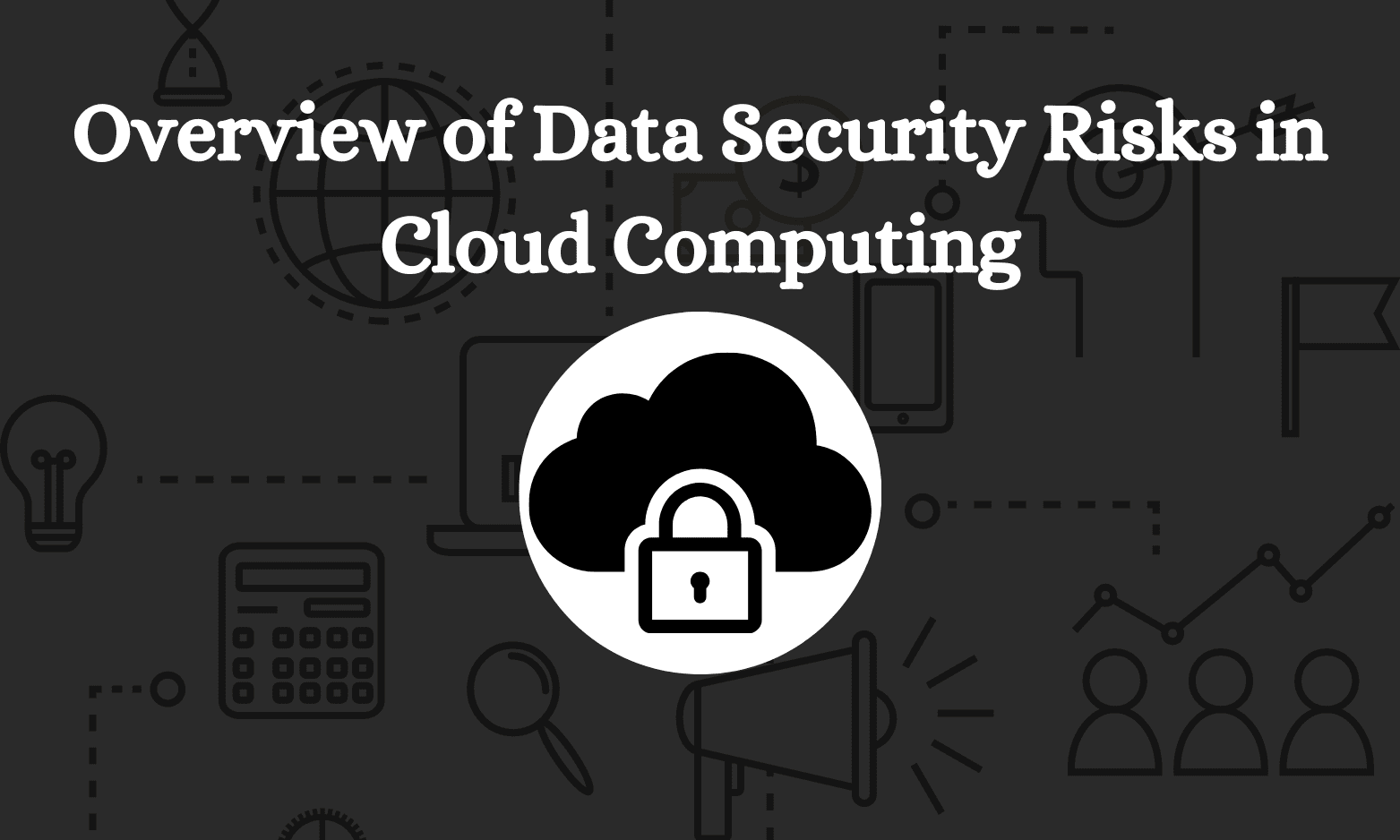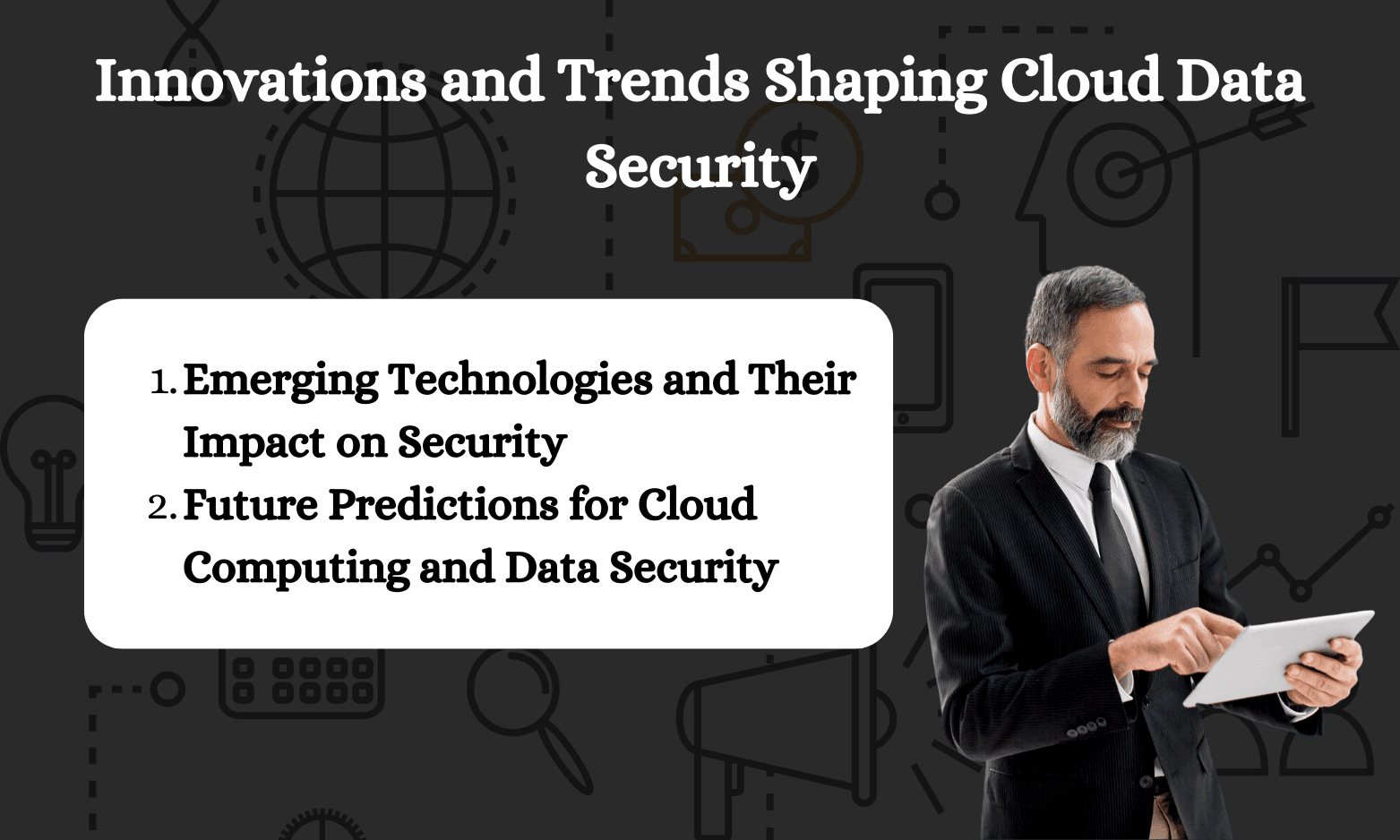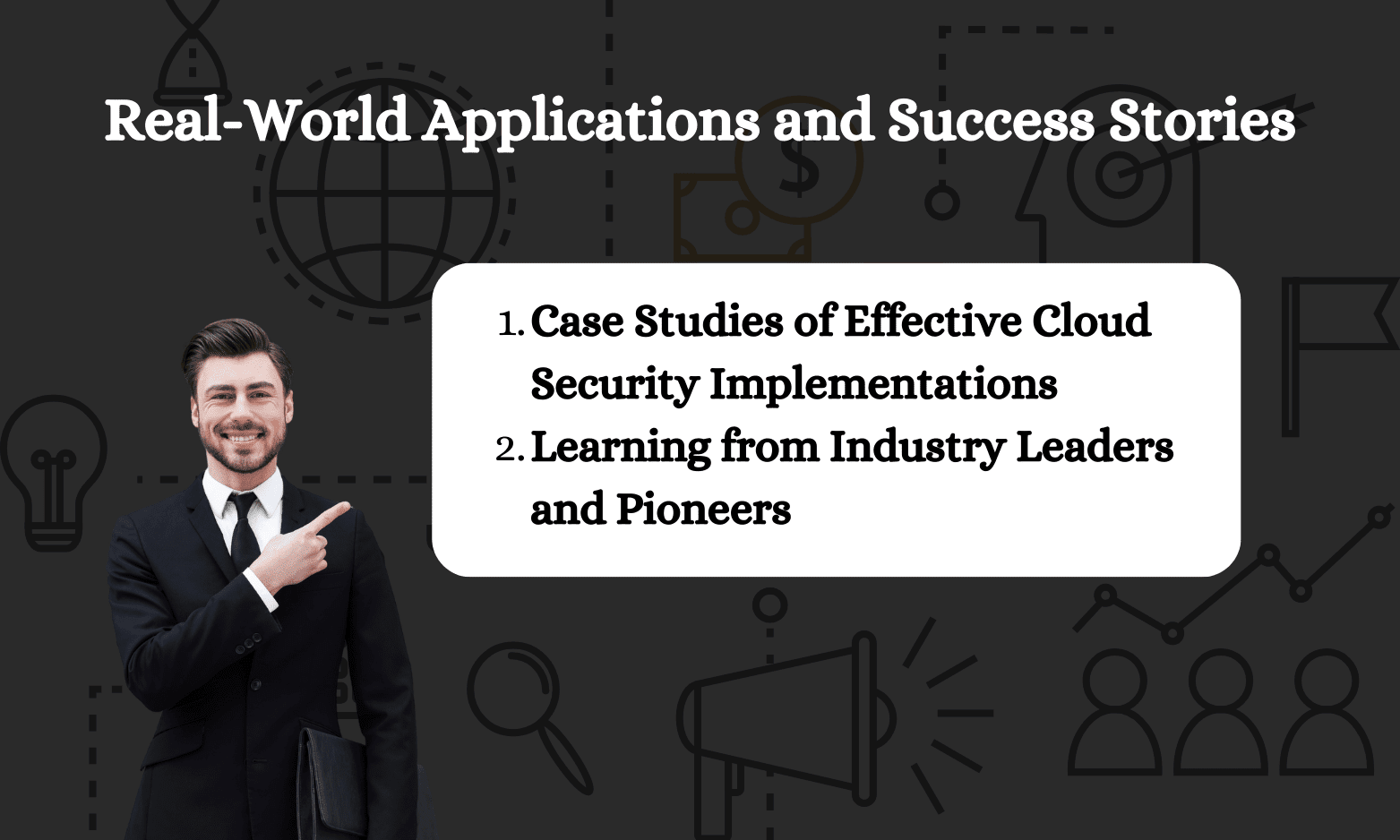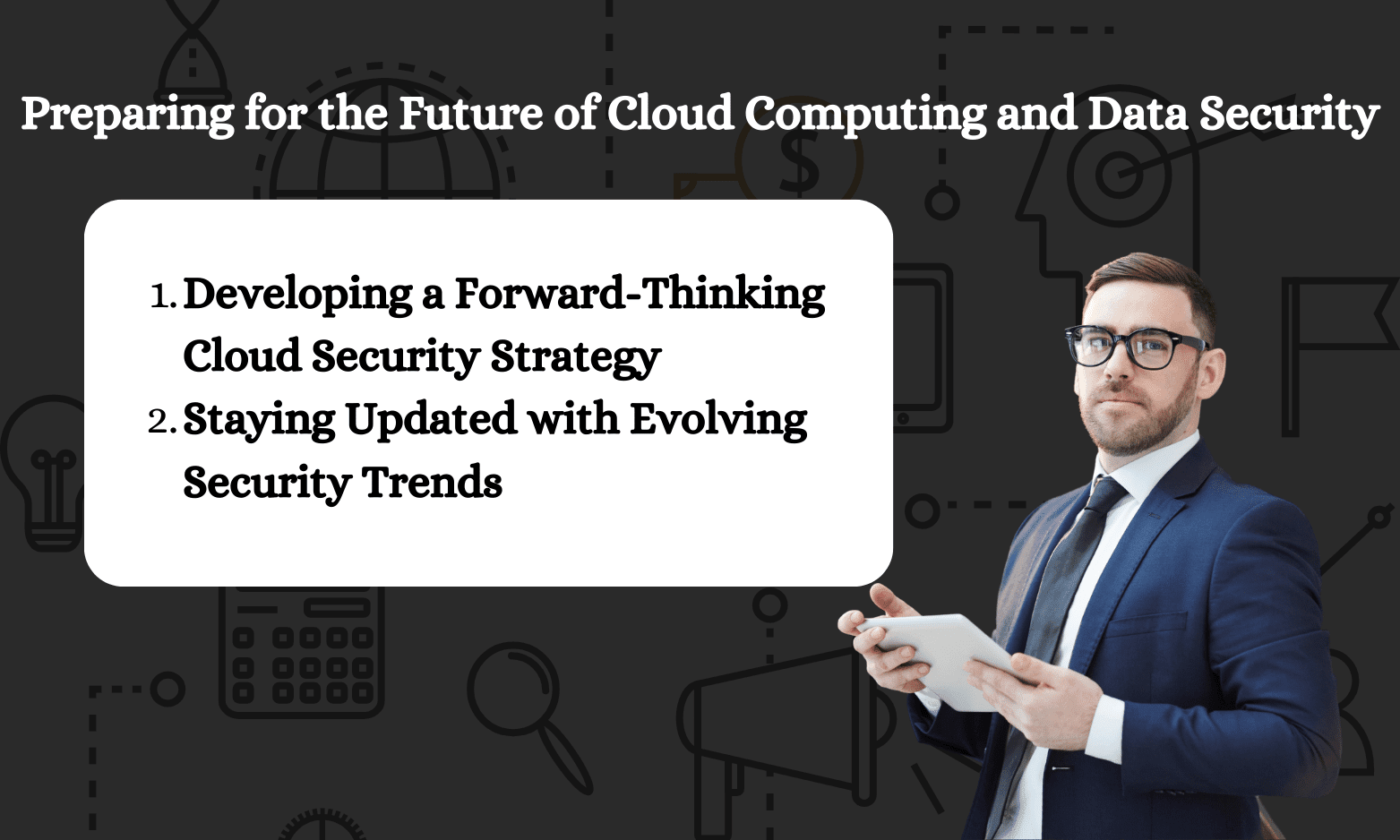
Cloud Computing and Data Security: Building a Resilient Digital Infrastructure
Cloud computing, a term that has revolutionized modern technology and business, holds immense potential to reshape how businesses operate and access resources. In today’s digital era, data security in the cloud is of utmost importance. This article explores the critical relationship between cloud computing and data security, providing the necessary insights to build robust digital infrastructures that propel your business to new heights.


Overview of Data Security Risks in Cloud Computing
Cloud computing has completely transformed how businesses store and manage their data, providing countless advantages. However, the adoption of cloud computing comes with certain risks, especially when it comes to data security. It is essential to comprehend these risks to guarantee the protection of your business’s data in the cloud.
Identifying Common Security Threats
Understanding the landscape of threats is pivotal in achieving robust cloud security. Here are some common threats that, once understood, can be effectively managed:
- Data Breaches: Arguably the most recognized threat, data breaches can occur for various reasons, such as weak or stolen credentials and unauthorized access.
- Insider Threats: These could stem from disgruntled employees or individuals with privileged access who intentionally misuse their position to compromise the system.
- Cloud Service Provider Vulnerabilities: Sometimes, vulnerabilities lie within a cloud service provider’s systems and APIs, contributing to potential data loss or breaches.
- Account Hijacking: Hackers can gain control over user accounts through phishing scams and then manipulate data or even reroute transactions through social engineering.
- Denial of Service: DoS attacks flood systems with excessive traffic, incapacitating services and blocking legitimate user access.
Understanding Compliance and Regulatory Issues
Navigating regulatory compliance in the cloud is a crucial challenge for organizations. The issue is that laws differ significantly across jurisdictions, making compliance complicated for multinational companies. Industries like healthcare and financial services face strict regulations such as HIPAA and GDPR, and non-compliance leads to fines and reputational damage. This could impact your business’s sustainability. It can be overwhelming to comprehend these compliance requirements, so aligning with a knowledgeable body like third-party auditors is a proactive step toward better understanding regulatory landscapes.
Strategies for Risk Assessment and Management
Embarking on a comprehensive risk management plan for cloud storage begins with a systematic risk assessment process. This involves evaluating your company’s systems to identify potential risks and prioritizing proactive defense measures. One effective approach is to classify data based on its sensitivity levels and allocate your time and resources to security measures accordingly. Regular audits and vulnerability assessments should also be integral parts of your comprehensive risk management strategy.
Next, you must implement required administrative, technical, or physical controls. For instance, you may encrypt sensitive data, train your staff on security best practices, or introduce stringent access controls.
Continuous monitoring is the final step, critical to promptly detecting any abnormal activity. Advanced cloud security analytics tools can help detect patterns that may indicate a breach and facilitate quick action.
It’s crucial to remember that these actions are not one-time fixes. They are iterative processes that require constant attention and evolution. As new threats emerge, these strategies will need periodic revisions. Therefore, staying proactive and prepared in the face of evolving security trends is essential.
This overview provides much-needed insights into effectively managing cloud computing and data security risks. Our next section will delve deeper into creating resilient defenses against these identified threats.

Implementing Robust Data Security Measures in the Cloud
Implementing robust data security measures is crucial when dealing with cloud platforms. A careful approach ensures that your critical business data remains safe and secure, minimizing potential risks.
Shared Responsibility Model
Cloud computing operates on a shared responsibility model that defines the roles of the cloud service provider and the user in maintaining data security. The provider is responsible for securing the cloud infrastructure and networking components, while the user is responsible for managing the data, applications, and access controls deployed in the cloud environment. Understanding and adhering to this model is essential to keep your data safe and secure in the cloud.
Backups and Incident Response for Data Protection
Regular backups are an essential part of a strong cloud data security strategy. They serve as a safety net that allows for data recovery in case of a cyber attack, system failure, or other disruptive incidents. A good backup strategy should include regular scheduling, secure storage locations, and periodic testing of recovery procedures.
Incident response involves a pre-defined plan that enables the quick addressing and mitigation of the effects of a security breach. The plan should outline roles, responsibilities, procedures for containment, and steps for recovery. This ensures a swift return to normal operations and minimizes impact.
Access Control and Identity Management Solutions
Another significant component ensuring cloud data security solutions is a stringent access control system and identity management solution. It’s a two-pronged approach which includes:
- Authentication: Verification of user credentials before accessing the system.
- Authorization: Providing different levels of access permissions based on user roles within the organization.
This approach aims to minimize the exposure of sensitive information to unauthorized individuals and maintain its confidentiality by limiting access only to those who require it for legitimate purposes. Additionally, identity management is crucial in monitoring user activities and identifying potential anomalies that could indicate a security breach.
Utilizing Cloud Security Tools
Adopting established best practices for cloud security is essential to build a resilient digital infrastructure. These practices include regular audits, continuous monitoring, frequent system patch updates, automated alerts for suspicious activities, and employee training programs to protect data in the cloud.
In addition, businesses can use various third-party tools to fortify their cloud storage environment against cyber threats. Examples of these tools include Cloud Access Security Brokers (CASBs), Firewall-as-a-service (FWaaS) offerings, or Intrusion Detection Systems (IDS). These tools can provide an extra layer of protection by safeguarding against external and internal threats.
Implementing robust data security measures in cloud computing requires a comprehensive approach. Enterprises should proactively secure their digital assets with advanced encryption, access control systems, and identity management solutions while adhering to best practices and using specialized security tools effectively.

Innovations and Trends Shaping Cloud Data Security
The continuous progress in technology directly impacts the evolution of cloud computing. This evolution is closely associated with the domain of data security, which is also adapting and changing along with these technological advancements. In this section, we will discuss the latest trends and cutting-edge technologies shaping the future of cloud data security.
Emerging Technologies and Their Impact on Security
Machine Learning (ML) algorithms and Artificial Intelligence (AI) systems offer a new way to automate breach detection and threat mitigation strategies. Thanks to their predictive capabilities, these tools effectively pinpoint anomalies within vast data pools that may be missed with a manual approach.
AI-based automated and agentless third party services which connect to your infrastructure via APIs are becoming the norm. CNAPPs assess infrastructure vulnerabilities, enforce security policies, and provide comprehensive visibility into cloud assets in real time. By continuously monitoring cloud configurations and comparing them against industry best practices and compliance standards, CNAPPs can preemptively identify and mitigate risks before they escalate into security incidents. This proactive approach to security management helps organizations stay one step ahead of threats, ensuring a secure cloud environment that supports business resilience and growth. As this technology continues to evolve, its role in shaping the future of cloud security becomes increasingly significant, offering a transformative solution that integrates security at every layer of the digital ecosystem.
Quantum computing is another promising domain with advantages in cloud computing security. By leveraging superposition principles to conduct multiple calculations simultaneously, it has extraordinary processing capabilities and can generate practically unbreakable cryptographic keys.
The rise of Edge Computing is also noteworthy, as it mitigates latencies by bringing computation closer to the source, minimizing exposure while transmitting sensitive information over networks. IoT sensors (like BitBlazr) which integrate with the cloud data aggregation technologies will help feed ML/AI-based monitoring defenses.
Future Predictions for Cloud Computing and Data Security
The future of cloud computing and cybersecurity is expected to see several dominant trends, ultimately easier and more secure deployments of applications, platforms, services, and data-gathering or brokering services.
AI-based LLMs (Large Language Models) everywhere within services and infrastructure will be the norm, driving significant advancements in how we interact with and manage cloud environments. These models will not only provide intelligent automation for a range of tasks such as real-time threat detection and automated compliance checks but also enhance user interfaces through sophisticated chatbots and virtual assistants. These AI-driven tools will offer more intuitive, conversational interactions with cloud systems, allowing for easier access and management of complex cloud services. By integrating chatbots and virtual assistants, cloud services can deliver personalized support and proactive management, effectively reducing response times and improving user satisfaction. This future predicts a seamless integration of AI capabilities, significantly enhancing security measures, optimizing cloud management, and transforming user experiences in the digital landscape.
Privacy-preserving computation methods are becoming increasingly crucial for securely sharing and processing data without compromising data confidentiality. One notable advancement in this area is Homomorphic Encryption techniques, which allow computations to be performed directly on encrypted data.
The proliferation of quantum-safe encryption methods is also expected, with new technologies like Quantum Key Distribution (QKD) providing more robust defenses against increasingly sophisticated threats.
Finally, as more small businesses migrate to cloud infrastructures, there will be a greater emphasis on simplifying security management protocols. This could lead to more standardized and user-friendly security settings and configurations.
The common thread among these trends is the need for continual evolution. To leverage cloud technologies’ advantages while safeguarding digital assets, businesses must stay up-to-date on developments. Adapting to shifting landscapes and forging ahead with innovative solutions encompassing emerging platforms and processes is critical. The goal is to build a dynamic, resilient digital infrastructure that can withstand, adapt, and thrive amidst the ever-changing tides of technological progress.

Real-World Applications and Success Stories
In today’s complex cyber world, theoretical information alone cannot provide a complete picture. Therefore, we must explore real-world applications and success stories to offer a realistic view of how cloud computing and data security contribute to building a robust digital infrastructure.
Case Studies of Effective Cloud Security Implementations
Various dynamic entities across multiple sectors have implemented successful cloud security models, which can serve as a guide for improving our understanding of practical applications of cloud security. For instance, a multinational technology company, IBM, has developed strict cloud security protocols such as multi-factor authentication and end-to-end encryption. Such a comprehensive approach to data protection has enabled them to maintain client trust and ensure uncompromised service delivery under varying conditions.
Mayo Clinic has also proficiently used cloud services to handle patient records and medical research data securely. Lastly, let’s shed some light on the financial giant Capital One, which has migrated most of its IT workloads to AWS (Amazon Web Services). They have developed an enhanced security model characterized by reinforced network boundaries and sophisticated threat intelligence capabilities.
These examples underline that no industry is immune to digital threats; however, effective measures can be implemented for secure growth.
Learning from Industry Leaders and Pioneers
Learning from pioneers and leaders in any field, including cloud computing, can help us gain valuable insights and direct experiences. These insights play a significant role in evolving data protection strategies. Former Cisco Systems CEO John Chambers once said, “There are two types of companies: those that have been hacked, and those who don’t know they have been hacked,” reminding us of the importance of remaining vigilant about cybersecurity threats.
Microsoft’s Zero Trust approach, which involves trusting nothing and verifying everything, emphasizes the need for consistently maintaining strong defenses without any exceptions.
Google’s innovative BeyondCorp methodology deals with potential data breaches by treating every access attempt as potentially dangerous, regardless of whether it originates internally or externally.
Such approaches demonstrate how innovators continually develop practices to overcome emerging cyber challenges, and their lessons are worth incorporating as we navigate our cloud journeys.

Preparing for the Future of Cloud Computing and Data Security
Navigating the complex worlds of cloud computing and data security can be challenging, but preparing for their future demands a nuanced understanding of evolving technology trends and strategic foresight. This involves continuously refining your knowledge base in response to technological advancements and devising robust strategies to minimize risks while seizing potential opportunities.
Developing a Forward-Thinking Cloud Security Strategy
Creating an effective strategy for future-proofing your cloud security initiatives requires insight, anticipation, and flexibility. It’s all about balancing embracing novel technologies and maintaining stringent data protection measures.
- Staying ahead of emerging threats: Constant vigilance is crucial to identifying potential vulnerabilities early. Predictive analytics tools can be invaluable allies in this fight by allowing you to anticipate threats before they become an issue.
- Adopting innovative technologies: Investing in cutting-edge solutions like artificial intelligence (AI), quantum cryptography, or blockchain technology may offer more robust defenses against cyber-attacks, diminishing data breach probability.
- Embedding resilience into the design: Resilience should not be seen as an afterthought; it must be incorporated right from the planning stage. Designing inherently resilient systems makes them far more capable of withstanding attacks or operational failures.
- Continuous learning and adaptability: Technological landscapes and your strategy perpetually evolve.
Staying Updated with Evolving Security Trends
Remaining equipped for current and future challenges mandates staying updated with ever-shifting security trends.
- Participate in professional communities and organizations: These platforms provide insights into best practices, new solutions, research findings, or threat information, helping you stay at the forefront of innovation.
- Pursue continuous education: Participating in webinars, seminars, conferences, or training workshops regarding cloud computing or cybersecurity enlightens you on new developments and diversifies your knowledge.
- Leverage reliable online resources: Reputed tech blogs, security bulletins, and cyber threat reports offer real-time updates about emerging trends and threats.
- Follow Thought Leaders and Innovators: Engaging with industry pioneers on social media platforms could present strategic insights or advances in cloud computing and data security.
The key lies in embracing change as an opportunity for improvement rather than a challenge. Investing time and resources into strategizing and staying updated today can significantly diminish the uncertainties of tomorrow, ensuring robust data security even in the ever-advancing world of cloud computing.
Need Some Data & IT Support?
Conclusion
In conclusion, cloud computing has transformed how businesses operate, but it also comes with its own risks, especially regarding data security. Comprehending these risks and taking proactive measures to ensure your data is always safe and accessible. This is where Class IV comes in, as they specialize in providing secure cloud solutions to businesses of all sizes. By partnering with Class IV, you can rest assured that robust data security measures protect your data, and you can identify common security threats with their help. Class IV also stays current on compliance and regulatory issues, ensuring that your business meets all requirements. With Class IV’s expertise, you can build a resilient digital infrastructure that protects your business’s critical data. Remember, these measures are not one-time fixes; you must stay proactive and prepared in the face of evolving security trends. Ultimately, prioritizing data security with Class IV can take your business to the next level and achieve long-term success.

